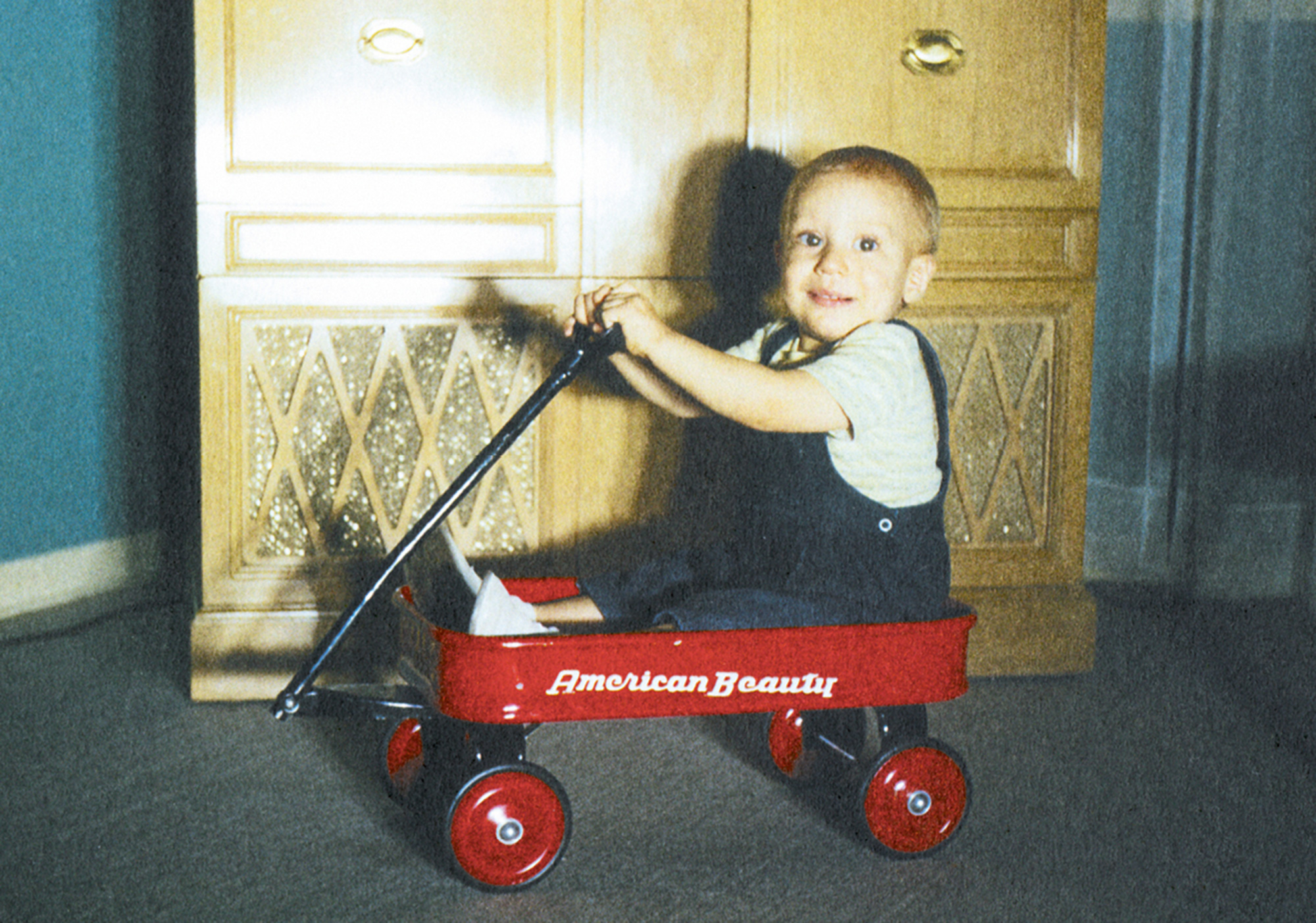Legend / Notes on Glaze
Make jam, not art
Wayne Koestenbaum
“Legend” is a column by Wayne Koestenbaum in which he suggests one or more possible captions for an image provided by the editors of Cabinet.

Why must art change the world? Recently in Paris I encountered the best confiture I’ve ever tasted: it came from Sicilian oranges. Jam won’t change the world. We don’t ask jam to foment revolution. Why must art be higher than jam?
A couplet by Chilean poet Nicanor Parra (translated by Liz Werner) helps me disentangle art and jam: “the poet tosses stones into the lake / concentric circles multiply outward…” “Seven Voluntary Labors and One Seditious Act” he titles the anti-poem, a mild missile. Will its seditious ripples change the world?
A little boy, in a photograph, rides a red toy wagon preposterously named “American Beauty.” William Carlos Williams put all his chips on a beautiful red wheelbarrow. Artful gambler, prodigal as jetting Onan, Williams claimed that “so much depends / upon // a red wheel / barrow….” From school, we know his shopworn touchstone. Snobs, we seek recherché condensations. So much depends on outré nectar.
The little boy in the photograph is nowhere near white chickens. His nearest companion, a quotidian cabinet, might actually be a stereo console, its turntable hidden. Williams identified his wheelbarrow as a glazed entity: “a red wheel / barrow // glazed with rain / water…” Is it an honor to be glazed? Does glaze give an object a treasurable patina? Or is glaze a deathly quality? Friend to throe and spasm, Emily Dickinson acknowledges the charisma of glaze: “The Eyes glaze once–and that is Death.” She doesn’t say whether she appreciates or abhors the glaze. She is a reporter, not a moralist. Glaze is what she knows to be true.
In the photograph, the boy’s eyes are glazed, obedient to the camera trained on him by avuncular gods. Glaze signifies cooperation with posing’s regime.
Last night I dreamt that two baby boys crawled on top of me. I was lying down in the corpse pose. Upon my immobile body the infants gamboled.
Marina Tsvetayeva wrote, in a letter to Boris Pasternak, “Boris, this is not a real letter. The real ones are never committed to paper.” This essay I’m trying to write is not a real essay; somewhere in my dream of two baby boys, the real essay hides, a motionless yet sentient investigation, alive to the pressure of infants seditiously impinging on my detestable self-sureness. It would be better for the world if I were less sure that my sensations took place inside my body rather than outside it. Pasternak wrote, in a letter to Tsvetayeva, “‘Allow me, Marina, to put an end to this self-torture, which can do nobody any good.” The torments we call prose—its pose of certainty, of containing information, as a glass jar contains preserves—do nobody any good. Better to throw a stone into water. Better to make jam.